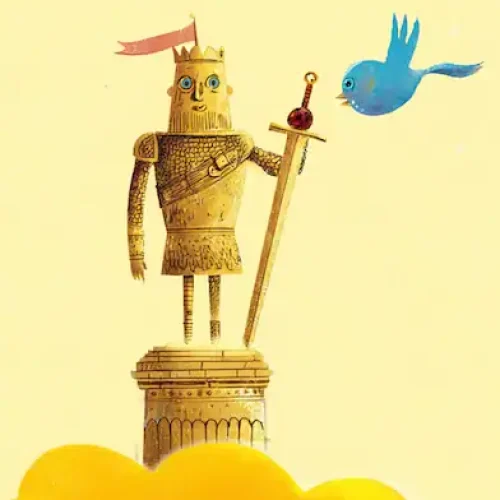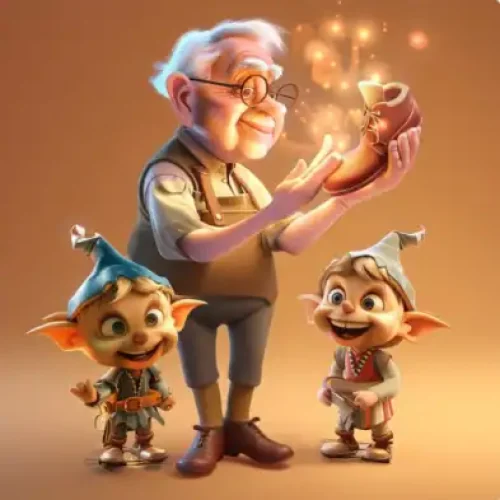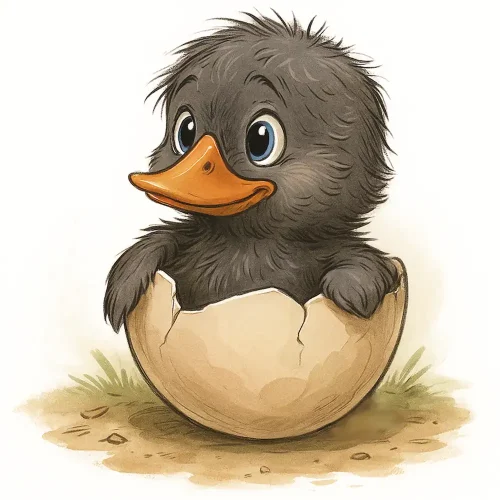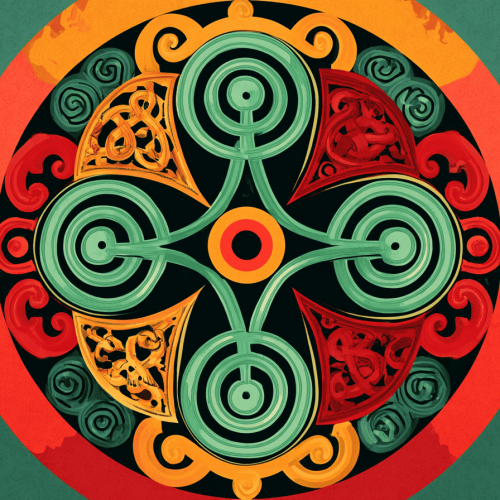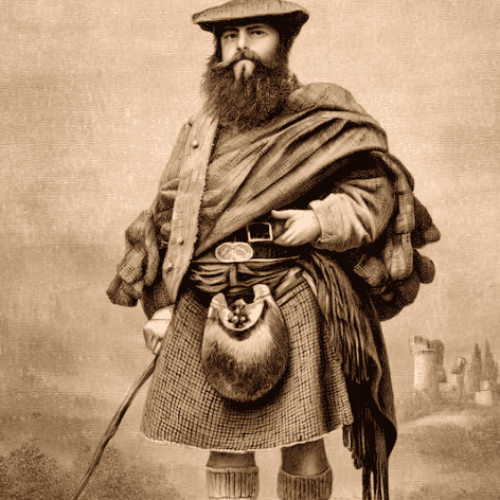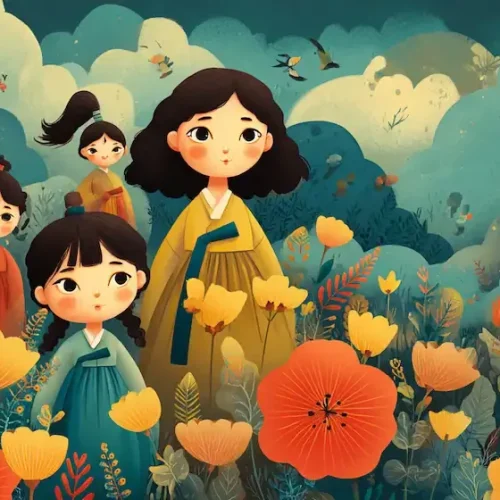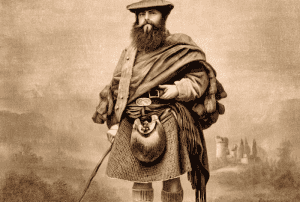A short history of Korean Stories, the symbols that matter and three stories to read tonight.
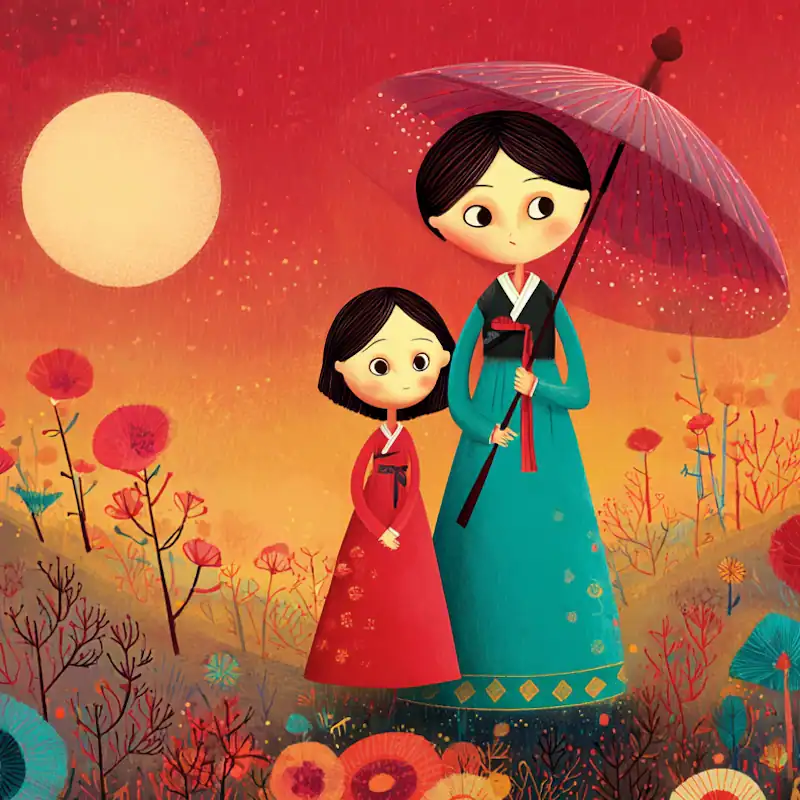
Korean Folklore
In Korean oldest folklore the mountain breath, the sea remembers and a tiger waits at the village edge. These stories are small in length but large in use. They help children understand fairness, courage and care without a lecture. They also open a door onto a culture where nature is not a backdrop but a character with opinions.
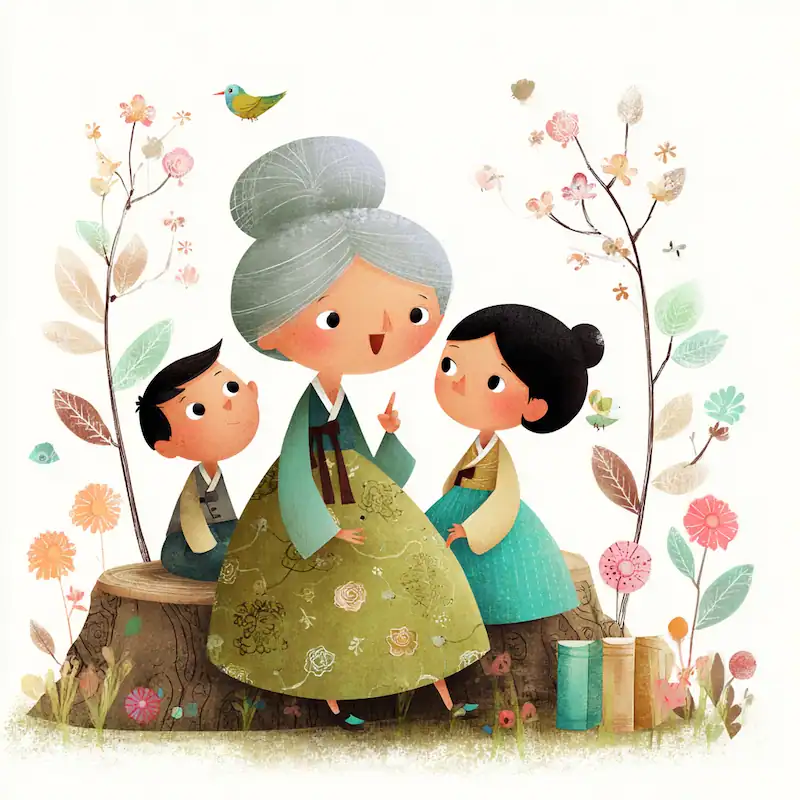
Where these stories come from
Oral tradition first. For centuries tales were passed on person to person — grandparents at the hearth, village tellers at seasonal festivals, shaman rites where ancestors and spirits felt close. In that world the sun and moon doesn’t just shine; they set things right. The sea doesn’t just reflect; it keeps score. If Korean folktales feel unusually alive in their landscapes, this is why.
A tradition of many currents, not one canon. There is no single official “Book of Korean Folklore.” The peninsula’s history is layered and regional. When many origin stories and hero legends were forming, Korea was divided between Goguryeo, Silla and Baekje — the Three Kingdoms. Each told its own foundations, heroes and holy places. Centuries of invasion, reunification and border change added yet more layers. The result is a folklore that adapts easily and speaks plainly to family life.
Then the page. When literacy spread, scholars began writing down what people already knew by heart. Two medieval collections are often cited and understanding the difference helps:
Samguk yusa (“Memorabilia of the Three Kingdoms”). Compiled by the monk Iryeon in the late thirteenth century, it preserves legends, miracle tales and folktales — including the earliest written version of the Dangun foundation myth.
Samguk sagi (“History of the Three Kingdoms”). Compiled a century earlier by the court historian Kim Busik, it is a formal state history. Useful context, but not a folktale anthology.
Both were written in Classical Chinese, the official written language of the courts, in the same way Latin served medieval Europe. Even the written record is a choice of what to capture, in whose voice and for which audience.
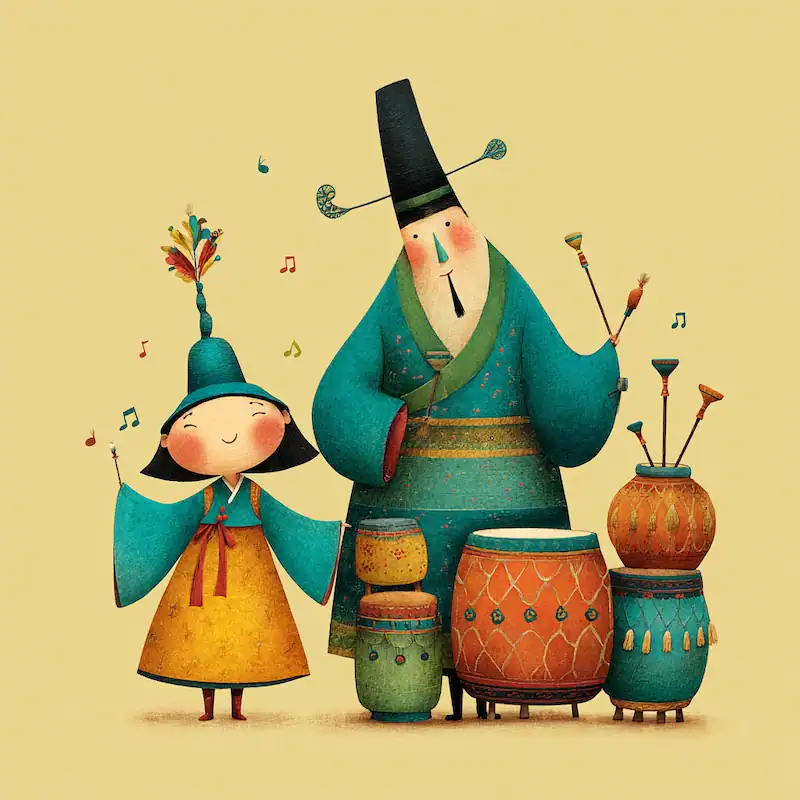
The sung stage. From the seventeenth century you meet pansori, from the word “pan” meaning a place where people meet and “sori” meaning “sound” or “song”. Pansori was a solo singer with one drummer, telling a long story shaped by rhythm and breath.
Moral lenses. Over time Buddhist compassion and Neo-Confucian duty (the Joseon state ethos) coloured the outcomes. Folktales stayed playful but leaned towards balance over vengeance. A greedy man may get soaked rather than cursed; a boastful figure is teased into humility rather than destroyed. For parents, this means the suspense is real, the solutions humane, and the endings safe to sleep on.
From manuscripts to modern classrooms. With printing and mass education, tales moved into primers and picture books. In the early twentieth century scholars began recording what had lived mostly in voice. Today the same motifs turn up in picture books, animation, games and drama. When your child spots a smiling white tiger on a poster or a goblin with a club in a cartoon, they’re seeing folklore at work.
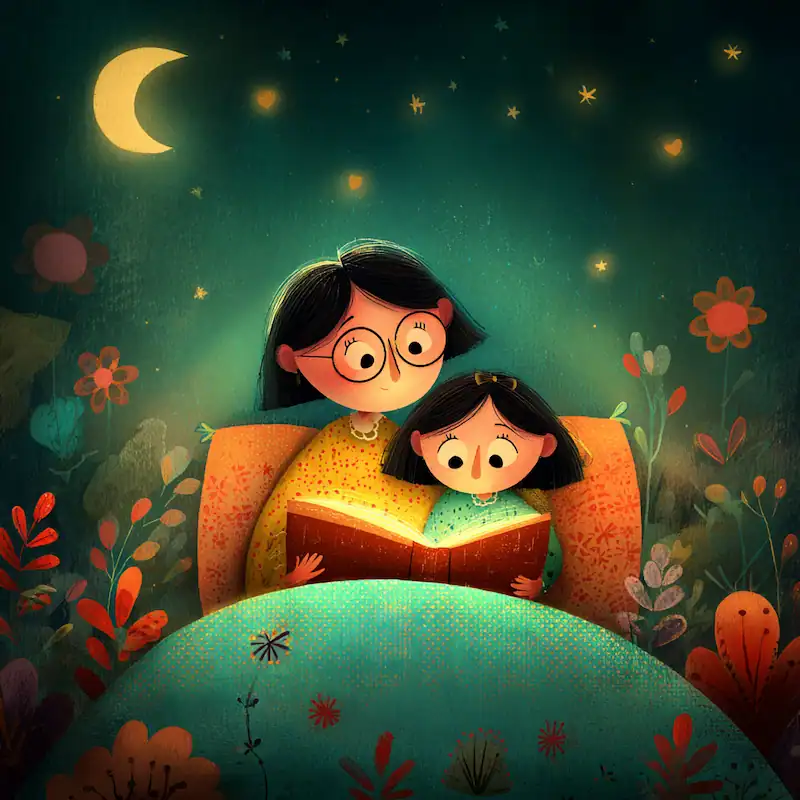
What children quietly learn
Parents ask a practical question: what will my child take from Korean folk tales? The answers are steady and useful.
Filial care and loyalty. Older siblings protect, younger ones help, grandparents matter. Care is action, not speech.
Fairness over pride. Vanity and greed bring trouble; balance is restored with proportion, not cruelty.
Cleverness with a conscience. Wit beats force, but trickery without responsibility backfires.
Nature as a partner. The sky restores order, the sea “remembers”, the forest tests resolve.
Children don’t need a lecture to see this. They feel it in the shape of the plot.
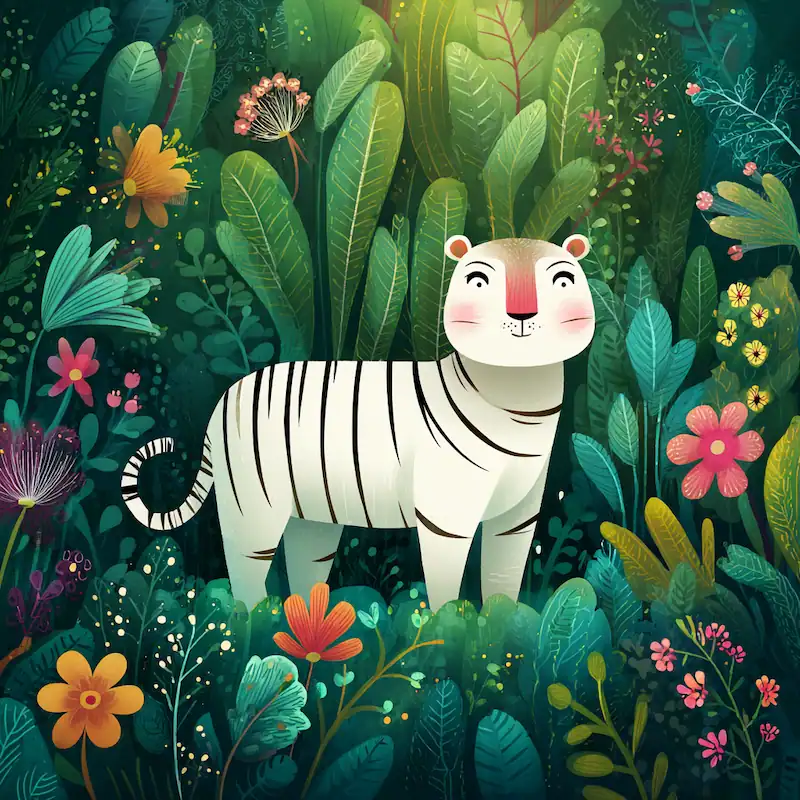
Tigers in Korean stories: danger, wit and a watchful guardian
Call the tiger (horangi) the most versatile character in Korean folklore. It comes in three moods, and seeing the range helps you choose what to read when.
Fearsome tester. In chase-and-escape tales the tiger raises the stakes so courage and cleverness can shine. You’ll recognise this rhythm in many versions of The Sun and the Moon: a frightening pursuit, a steady older sibling, an ending that puts the sky in order.
Comic foil. In “The Tiger and the Dried Persimmon,” a boastful tiger overhears a mother calm her crying baby with a snack and decides persimmons must be scarier than tigers. A bungling thief lands on its back; farce ensues. The lesson is pride punctured, not animal peril.
Respected emblem. Beyond folktales, tigers stand for protection and strength. Temple paintings place a tiger beside the mountain spirit; folk art pairs a cheeky magpie with a pompous tiger to wink at stiff authority; modern mascots borrow the animal’s watchful authority. Respect doesn’t exclude humour — and that balance is very Korean.
So no, tiger tales aren’t only warnings. They teach with fear and with laughter, and always with purpose.
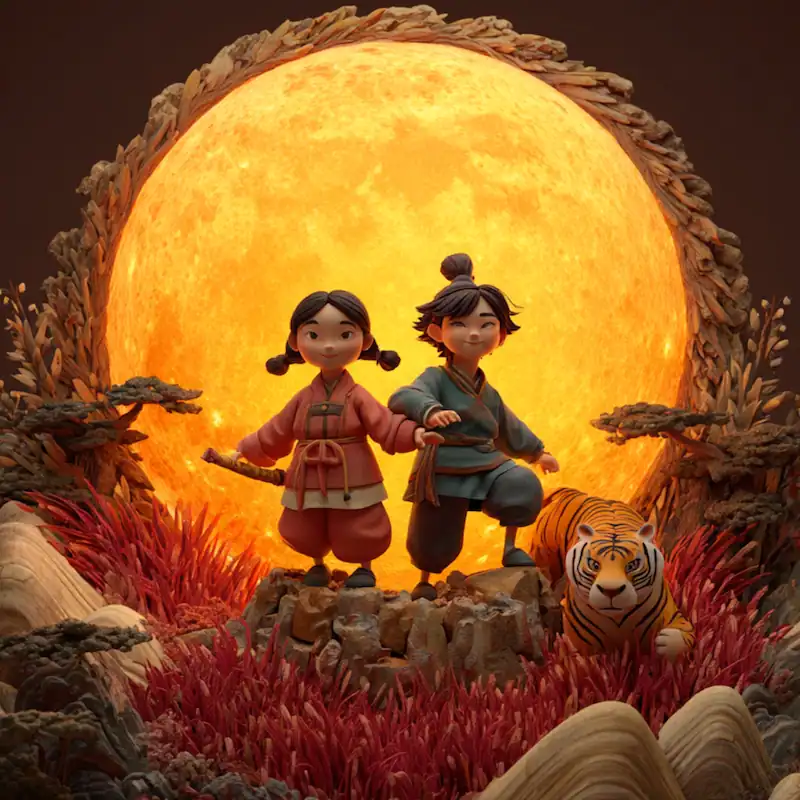
A simple glossary of symbols
Dokkaebi — playful goblin spirits that reward generosity and embarrass greed
Sun and the Moon — order and safety after a frightening moment
Mountains & Sea — places of testing and change; the sea “remembers” what we set in motion
Grandmother, mother, older sister — everyday leadership, practical and brave
Try this as you read: ask, “What does the tiger or the sea stand for here?” Children’s answers are often spot on.
Three classic read-alouds on Kooky Kids World
Why the Sea Is Salty (ages 6–10)
A humble hand-mill can make anything, but it won’t stop on its own. A thief asks for salt and cannot undo his wish. The sea stays salty forever.
Talk about: when wanting becomes “too much”.
Try this: dissolve salt in water, let it evaporate and “find” the salt again.
King Donkey Ears (ages 8–12)
A respected king hides long ears under his crown. Keeping the secret grows heavier than the ears themselves. The truth arrives gently and the court learns that dignity isn’t perfection.
Talk about: being honest without being hurtful.
Try this: draw whispering bamboo and write one kind truth inside.
The Sun and the Moon (ages 6–10)
A tiger gives chase. The older leads, the younger follows. They climb to the safety of the sky and become the Sun and the Moon— and day and night begin.

Talk about: what bravery looks like when you’re small.
Try this: make a paper-plate moon-phases wheel.
Five-minute ways to make stories stick
Feelings first. Before explaining, ask who felt scared, proud or brave.
Choice → result. Pick one decision and what followed; draw the arrow.
Three-frame retell. Beginning, middle, end as quick sketches.
Word hunt. horangi (tiger), eomma (mum), appa (dad) — spot and echo.
Soundtrack a chase. Tap a steady beat during tiger scenes to sharpen focus.
Keep exploring folktales
Round out your shelf with two context pieces that pair well with Korea:
Welsh Folktales and Their Importance to Welsh Heritage
https://kookykidsworld.com/blog/welsh-folktales-and-their-importance-to-welsh-heritage/
Irish Folktales and Their Importance to Irish Heritage
https://kookykidsworld.com/blog/irish-folktales-and-their-importance-to-irish-heritage/
And for a laugh-out-loud tiger, look up “The Tiger and the Dried Persimmon.” It’s the best lesson on pride you’ll read this month.
Teacher Zone – Activities & classroom (KS1–KS3)
Each activity takes 10–20 minutes, needs minimal prep, and works at home or in class.
1) Compare origins
Pair: Why the Sea Is Salty with another “why” tale (any culture)
Goal: See how origin stories explain the world with clear cause → effect
Materials: both tales, a simple “3-step logic map” (three boxes with arrows)
Model for Why the Sea Is Salty
-
- Magic mill grants anything → 2) Greedy thief asks for salt, doesn’t know the stopping spell → 3) Mill never stops, sea becomes salty forever
Learners do: read a second “why” story, fill their own 3-step map, then compare.
Prompt: “This story explains X because Y happened.”
Differentiate: KS1 add icons; KS3 add a fourth box called Value (e.g., “Greed has a cost”).
Extension: draw a 3-panel comic that matches the map.
2) Theme evidence
Texts: any of the three Korean folktales
Goal: Name a theme and back it with a line from the text
Materials: five cards — care, loyalty, fairness, pride, nature
Steps
-
- Read or recap the story.
-
- In pairs choose two cards that best explain the ending.
-
- Find one line or event that proves each choice.
-
- Share back: “We chose fairness because ___.”
Differentiate: KS1 use “the part that shows it”; KS3 write a short paragraph using Theme → Evidence → Because.
Extension: rank all five themes from most to least important for this story and justify the order.
3) Reader’s Theatre — King Donkey Ears
Goal: Fluency, expression, comprehension by speaking short lines aloud
Materials: dialogue strips below (verbatim from your story), simple props optional
KS1 short set (5–7 minutes)
Scene 1: The secret
Narrator: “Long ago in Korea… After he became king, his ears began to grow, long and soft like a donkey’s, but he told no one.”
King: “Barber Mok, you will cut my hair. Keep your eyes low and your mouth shut. Fail me and you will regret it.”
Mok: “Your Majesty, I will be as silent as a stone.”
Scene 2: The whisper to the earth
Narrator: “So… Mok walked beyond the walls to the stream where reeds bent over the water.”
Mok (whisper): “The king has donkey ears.”
Scene 3: The bamboo sings
Bamboo (chorus): “The king has donkey ears!”
Narrator: “By evening the city buzzed. By morning the palace knew.”
Scene 4: Kind help
Healer: “You are carrying a large burden… If you cannot tell a person, tell the earth. Secrets need a safe place, or they make you ill.”
Hat maker: “Allow me to make a soft everyday hat that fits what is true. A hat should shelter a head, not crush it.”
Scene 5: The open gate
King (to crowd): “Yes… I have donkey ears… I am finished with fear. Release Barber Mok.”
Narrator: “From today, no one will be punished for speaking the truth kindly.”
KS2–KS3 extended set (10–12 minutes)
Scene A — The summons
King: “Barber Mok, you will cut my hair. Keep your eyes low and your mouth shut. Fail me and you will regret it.”
Mok: “Your Majesty, I will be as silent as a stone.”
Narrator: “The silk cover was lifted… long donkey ears, soft as new leaves.”
King: “You saw nothing.” — Mok: “I saw nothing.”
King: “You will tell no one.” — Mok: “I will tell no one.”
Scene B — The burden
Narrator: “Days turned to weeks, and the secret pressed on him like a stone on his chest.”
Wife: “You are carrying something too heavy… Let me help.”
Healer: “If you cannot tell a person, tell the earth… Secrets need a safe place, or they make you ill.”
Scene C — The whisper and the wind
Narrator: “He bent close and breathed into the dark…”
Mok (whisper): “The king has donkey ears.”
Bamboo (chorus): “The king has donkey ears!”
Scene D — Before the throne
King: “You broke your word. You told my secret.”
Mok: “No person was told… I dug a tiny hole by the stream, whispered the words into the ground… No harm was meant.”
King: “I see… Take him away. Cut down the bamboo. Every stalk.”
Scene E — The hat maker’s answer
Hat maker: “Your Majesty… you cannot breathe under that crown. If the wind speaks, let it speak. You need air.”
Hat maker: “Allow me to make a soft everyday hat that fits what is true… It can be made so your ears are seen, not squashed.”
King: “Make the hat.” — Hat maker: “May I?” — King: “It feels like mine.”
Scene F — The open gate
Narrator: “The city gates were ordered open… People flooded the square.”
Wind / whisper: “The king has donkey ears!”
Child: “I like them… They look soft.”
King (to all): “Yes, I have donkey ears… I am finished with fear.”
King (to guards): “Release Barber Mok.”
King (to crowd): “From today, no one will be punished for speaking the truth kindly. We will listen first, ask questions, and give mercy.”
Scene G — A lighter crown
Narrator: “People began to say, ‘Our king hears us.’ His unusual ears proved useful.”
King: “A hat should shelter a head, not crush it.”
Narrator: “On quiet afternoons his hat was taken off, and the wind was allowed to comb his ears… ‘Truth told kindly is a gift.’”
Tips
KS1: enlarge font, keep chorus lines in bold.
KS3: ask learners to add two lines that model kind honesty.
4) Creature study: dokkaebi or tiger
Goal: Connect symbol → behaviour → lesson
Template boxes: What is it? • How it behaves • Where it appears • What lesson it teaches • (KS3+) How it appears in art today
Model — Tiger
What: a powerful animal used as tester, protector or comic foil
Behaviour: chases in The Sun and the Moon, gets outwitted in “The Dried Persimmon”
Where: folktales, temple paintings, folk art, modern mascots
Lesson: respect power, don’t boast, be brave and clever
Model — Dokkaebi
What: playful goblin-spirit
Behaviour: rewards generosity, embarrasses greed
Lesson: good choices bring good fortune
5) Language link: three family words in context
Words: eomma (mum), appa (dad), halmeoni (grandmother)
Pronunciation: um-mah • ah-pah • hal-muh-nee
Steps: hear & echo → swap into one sentence from the story → 30-second partner retell using at least one word.
Exit check: ask three learners to use one word in a short sentence.

